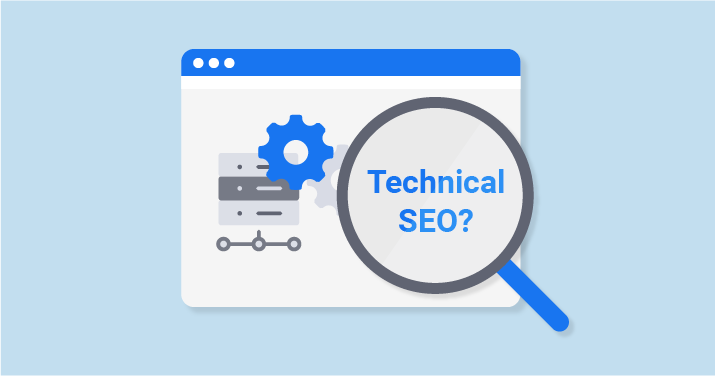The Characteristics of a Technically Optimized Website

A technically optimized website is one that performs well on search engines and provides a great user experience. There are many factors that go into making a website technically optimized, including site speed, mobile friendliness, and proper use of keywords and metadata. In this blog post, we will discuss the characteristics of a technically optimized website and how you can make your own website more efficient!
It’s fast
In today’s fast-paced world, we expect things to happen quickly. We want instant gratification and we don’t want to wait. This is especially true when it comes to the internet. If a website takes too long to load, we simply move on to the next one. This is bad news for businesses who have slow websites because it means they are losing potential customers. Not only that, but search engines also penalize slow websites by giving them lower rankings. This is why it’s so important to have a technically optimized website that loads quickly. Fortunately, there are some easy ways to speed up your website. By doing things like optimizing images and using a content delivery network, you can ensure that your website loads as quickly as possible, providing a better experience for both users and search engines.
It’s crawlable for search engines
Crawlability is essential for any website that wants to rank well on search engines. Without it, search engine bots will have difficulty accessing and indexing your site, which can lead to lower rankings. There are several things you can do to make your website more crawlable. First, you can create a sitemap, which is a list of all the pages on your website. This makes it easier for bots to find and index your content. Second, you can use proper internal linking. This means linking to other pages on your website from your pages. This helps bots understand the structure of your site and improve their ability to crawl it. By taking these steps, you can improve your website’s crawlability and help it rank better on search engines.
It doesn’t have dead links
Dead links, or 404 errors, occur when a user tries to access a page that doesn’t exist. This can be frustrating for users and will cause them to leave your site. It’s important to check for dead links regularly and update your website accordingly. One way to do this is to use a link checker tool, which will scan your website for broken links and report any errors. You can also manually check each link on your site to ensure that it’s working properly. If you find a dead link, update the URL or remove the link from your site. By taking these steps, you can help prevent dead links from occurring on your website.
It doesn’t confuse search engines with duplicate content
In the world of search engine optimization, duplicate content is a major no-no. If your website has multiple pages with identical or nearly identical content, it can be confusing for search engines, which may result in lower rankings. To avoid this, make sure to use canonical tags to tell search engines which version of the content is the original. Canonical tags are simple pieces of code that tell search engines which page is the source of the content. If you have duplicate content on your website, be sure to add canonical tags to ensure that your pages are properly indexed and ranked.
It’s secure
A website that is not secure can be a major turnoff for users. No one wants to input their personal information into a site that could be hacked, and users will quickly go to a competitor if they feel their data is at risk. In addition, search engines are increasingly penalizing sites that are not properly secured, making it more difficult for those sites to rank highly in search results. There are a number of steps you can take to make your website more secure, including using SSL certificates and setting up proper redirects. By taking these precautions, you can ensure that your site is both user-friendly and search engine-friendly.
It has structured data
Although most people think of HTML when they think of coding for the web, there is actually a wide range of different code languages that can be used to create a website. One of these is known as structured data. Structured data is a code that you can add to your website to help search engines understand your content. This can be used to provide information about your products, services, or company. By adding structured data to your website, you can help improve your visibility in search engine results pages. In turn, this can help you attract more visitors to your site and improve your business.
It has an XML sitemap
XML sitemaps are a great way to help search engines index your website. By creating a sitemap, you can submit it to search engines and they will use it to find and index your pages. This is especially helpful if you have a large website or dynamic content. XML sitemaps are also useful if you have pages that are not easily accessible by search engines. By submitting a sitemap, you can make sure that all of your pages are indexed and that your website is being properly crawled. In addition, you can use a sitemap to track the pages that have been recently updated or added to your website. This is a great way to keep your website fresh and up-to-date for users and search engines alike.
International websites use hreflang tags
If you have a website that is available in multiple languages, it’s important to use hreflang tags to tell search engines which version of the content is meant for which audience. This will help ensure that users are seeing the correct version of your website. Hreflang tags are HTML tags that tell search engines which language a page is written in. They look like this: <link rel=”alternate” hreflang=”en” href=”http://example.com/en/page.html”> This tag tells search engines that the page is written in English and is intended for an English-speaking audience. You can use hreflang tags on both your pages and your website’s sitemap. If you have a multilingual website, it’s essential to use hreflang tags to help ensure that users see the correct version of your content.
Final Thought
A technically optimized website is one that is designed to be both user-friendly and search engine-friendly. By taking the time to optimize your website, you can improve your visibility in search results and attract more visitors to your site. In addition, you can use a number of techniques to make sure that your website is properly indexed and ranked by search engines. By taking these steps, you can ensure that your website is performing at its best.
If you’re looking for help with optimizing your website, contact Malaysia SEO today. Our team of experts are happy to assist you with all of your technical optimization needs. Thanks for reading! We hope you enjoyed this blog post. If you have any questions or comments, please feel free to leave them in the comments section below. We’d love to hear from you!
This article is posted on Article Daisy.




